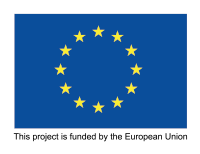
One of the reasons is that the project implementation methods provide a solid discipline especially for non-routine works, but the more common reason is that projects are considered as a financial opportunity for CSOs. Grant programmes, provided by the public sector, international organizations and private sector are seen as the primary sources in this regard.
Although STGM is not aiming to spread project fetishism as a campaign throughout the country, but, we, as STGM, actually desire to strengthen the project management capacities of local organizations for enjoying grant opportunities that national and experienced organizations can easily access with their current knowledge.
Various trainings on project writing are delivered by several institutions, CSOs, programmes or companies. Some of them are fee based services and some of them are free of charge training opportunities. You can have access to a training module regarding project development and project proposal writing via STGM’s free of charge online platform called, STOK Learning Platform. “Plan-Lover Organisations- Herkes Plan Sever” module (only in Turkish) provides training opportunities on project development and project proposal writing.
We also recommend you to review the following resources on this regard;
- CONCORD Guideline on Logical Framework Approach
- STGM Brief Presentation on Logical Framework Approach and Matrix
- Introduction to Results And Monitoring on the EU External action Wiki website
- UNDG RBM Handbook
- Guide for Trainers Developing and Managing EU-Funded Projects, Simon Forrester, TACSO, 2011
- Theory of Change: A Practical Guide. MDF Training & Consultancy, 2021
The intervention logic provides a description to summarize how the intervention is expected to work that should lead to the intended change. An intervention is often a solution to a problem or challenge. The intervention logic is also a tool which helps to explain the different steps and actors involved in the intervention.
The intervention logic provides a description to summarize how the intervention is expected to work that should lead to the intended change. An intervention is often a solution to a problem or challenge. The intervention logic is also a tool which helps to explain the different steps and actors involved in the intervention.
The Logical Framework Matrix (LFM) is a tool that demonstrates the internal consistency and integrity of the intervention with the designed project. A “logical framework matrix” presents results (encompassing Outputs, Outcomes and Impact), assumptions, indicators, targets, baselines, and sources of verification related to a project.
More information about Logical Framework Approach and Matrix, please have a look at:
Various trainings on project management (PCM, Prince 2, etc.) are delivered by several institutions, CSOs, programmes or companies. Some of them are fee based services and some of them are free of charge training opportunities. You can have access to a training module on project development, project management and implementation via STGM’s free of charge online platform called, STOK Learning Platform. “Plan-Lover Organisations-Herkes Plan Sever” module (only in Turkish) provides training opportunities on project management.
We also recommend you to review the following resources on this regard;
- CONCORD Guideline on Logical Framework Approach
- STGM Brief Presentation on Logical Framework Approach and Matrix
- Introduction to Results And Monitoring on the EU External action Wiki website
- UNDG RBM Handbook
- Guide for Trainers Developing and Managing EU-Funded Projects, Simon Forrester, TACSO, 2011
- Project Cycle Management Guideline. European Commission, 2004
Agreements are considered as a key mechanism of partnerships because their role is to govern interactions. They help partnerships become more effective by allowing partners to cope with relational, performance and situational risks that characterize inter-organisational relationships. The Partnerships Resource Centre and The Partnering Initiative have developed a “Partnering Agreement Scorecard” based on insights from practice and grounded on theory. The tool will be beneficial for any organizations that contemplate setting up a new or reviewing an existing partnership. The tool can be reachable here.
Monitoring is a regular function to collect data systematically on specific indicators to analyze progress of an on-going project in terms of resource use, implementation and delivery of results. Monitoring focuses on inputs, activities, outputs and outcomes to measure the progress of a project.
Evaluation is an in-depth and systematic assessment of an on-going or completed project, in terms of design, implementation and results. It is performed against defined criteria such as relevance, efficiency, effectiveness, impact and sustainability.
For more information, please check out the resources below;
- Guidelines on Linking Planning/Programming, Monitoring and Evaluation. European Commission, DG NEAR, 2016
- M&E A Self Guide Mini Course . 2020
Basically, CSOs try to achieve one or more of the following through their communication works.
- Raise awareness
- Visibility
- Partnership
- Advocacy
- Promotion
- Dissemination
Detailed information regarding important steps of communication strategy, what and how communication tools are used and how to gauge the success of the strategy can be found in the "Sivil Düşün Guide for Communication Strategy and Tools" in Turkish.
As a sample, an implementation plan of a project that STGM had implemented before a can be found here.
A sample project schedule/calendar can be found here. Please be noted that the sample can be revised in accordance with needs.
You can find a sample contract here (in Turkish) for services of independent consultants or experts. You are able to revise it in accordance with your requirements.
The Expert/Training/Consultant report format of STGM can be accessed here.

